In this article, I’ll show you how to connect the Micro800 PLC Simulator to Factory IO to see how your PLC code would control a physical process.
First, let me introduce the two pieces of software that we’ll use in this article.
Micro800 Simulator
The Allen Bradley Micro800 Simulator is a free tool that allows you to simulate an Allen Bradley Micro800 PLC on your computer. This tool lets you test your projects without a physical PLC.
The Micro800 Simulator is bundled with another piece of software called Connected Components Workbench. Connected Components Workbench is the development environment for Allen Bradley Micro800 PLCs and is completely free to download and use.
Because Connected Components Workbench is free to use and includes a PLC simulator, it is an ideal choice for learning PLC programming. That’s why we use Connected Components Workbench in our PLC Programming from Scratch series of courses. You can learn more about PLC Programming from Scratch using this link.
Factory IO
Factory IO is a 3D factory simulation software that lets you simulate physical equipment in a virtual environment.
Factory IO comes with communication drivers for many different types of PLCs. You can use these communication drivers to connect Factory IO to a physical or virtual PLC to see how the project running on a PLC would control physical equipment.
Factory IO is not free software, but you can try it for free for 30 days using this link.
Now that we know what software we’ll be using, let’s go ahead and see how we can connect the Micro800 Simulator to Factory IO.
Set up Factory IO
On my computer, I have launched Factory IO.
To start working with Factory IO, I can build a scene from scratch using the built-in catalog of components, or I can open an existing scene.
In this article, I’ll work with an existing scene. I open the scene “From A to B” by clicking on Open, then Scenes, then 1 - From A to B.
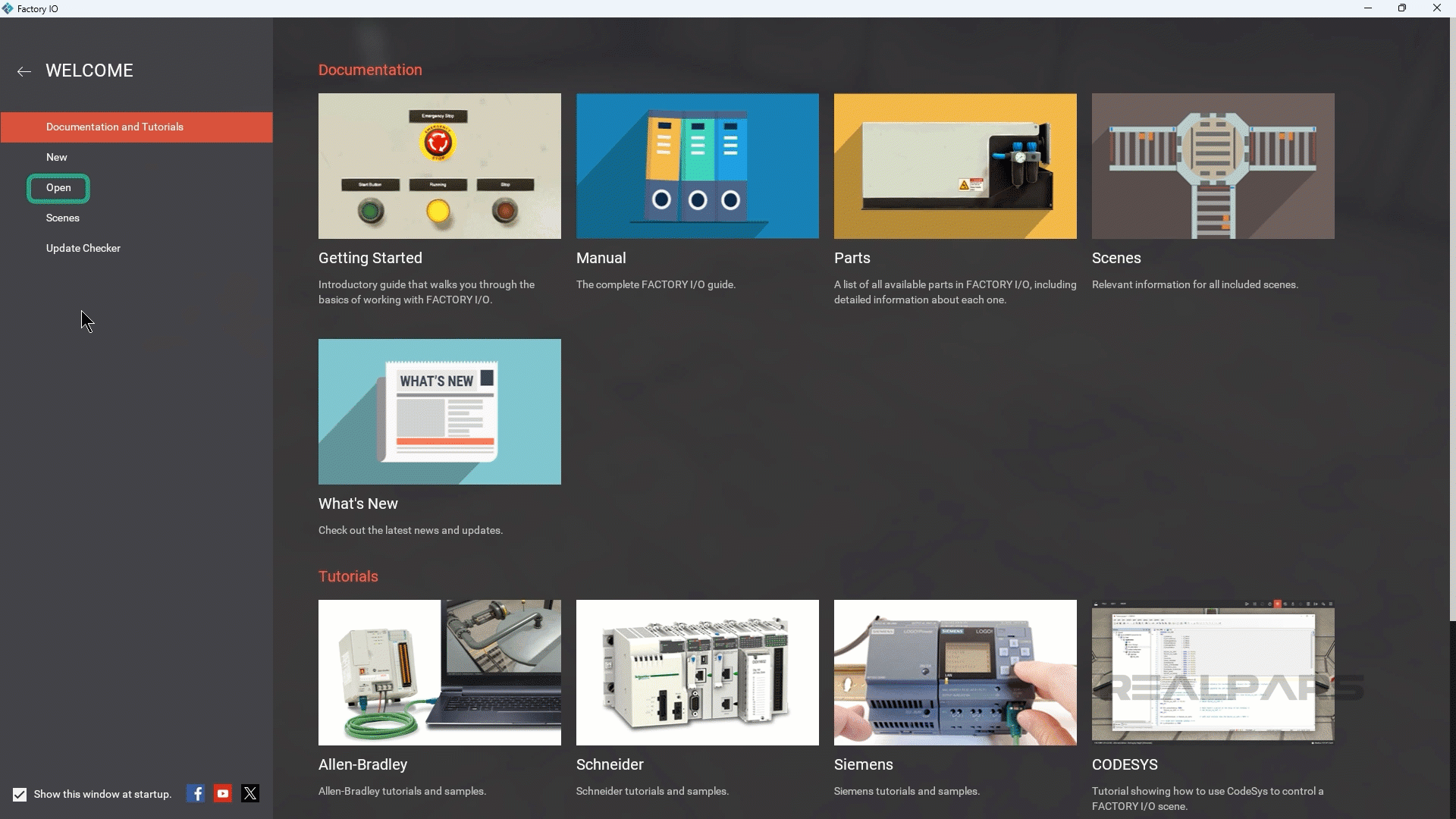
Now, I want to configure the driver that will connect this scene to a PLC. To do that, I can click on File, then Drivers.
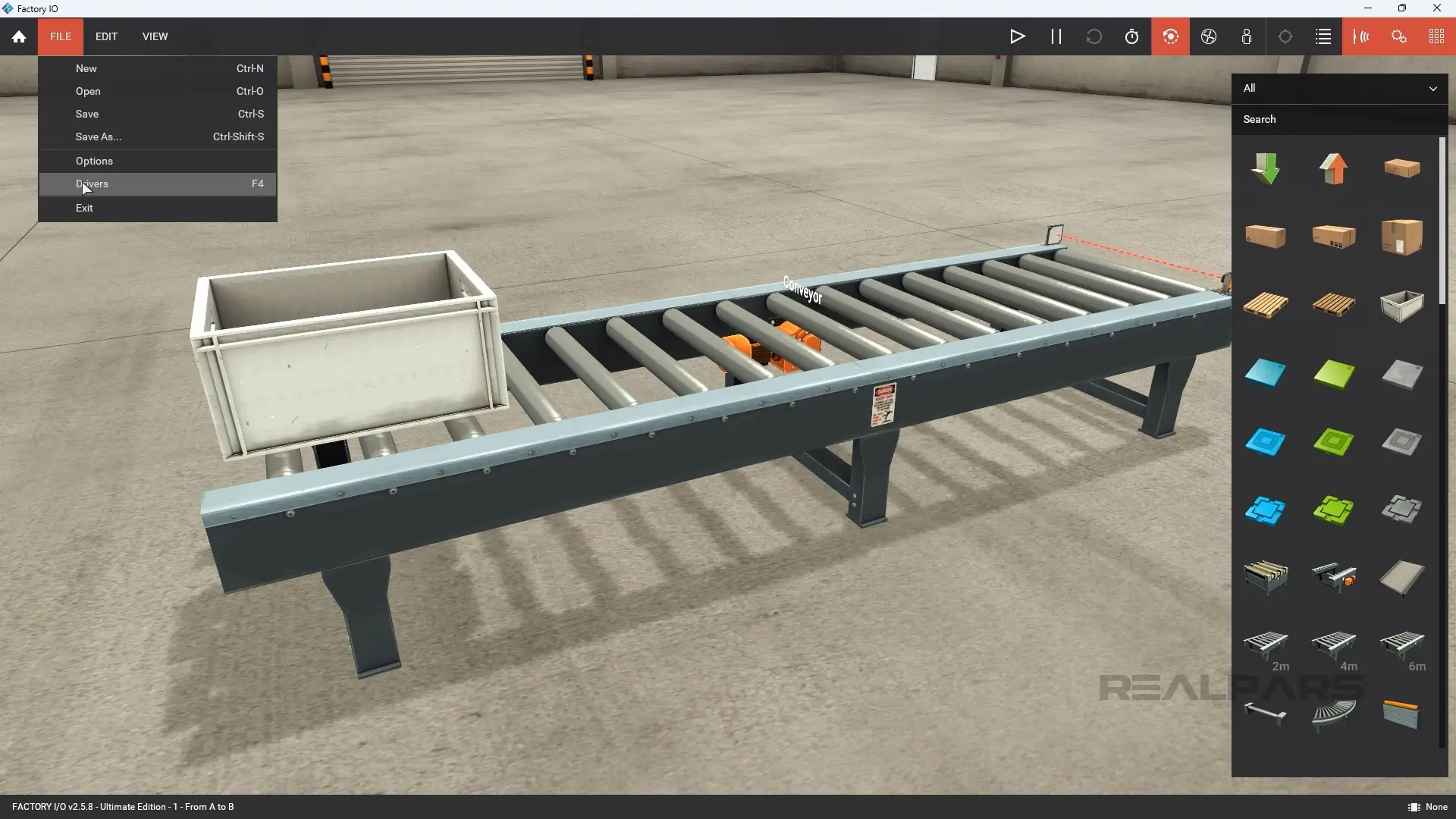
In the Drivers dropdown menu, there are many different communication drivers available to connect the scene to PLCs from different manufacturers. Since I am connecting the scene to a Micro800 PLC, I select the Allen-Bradley Micro800 driver.
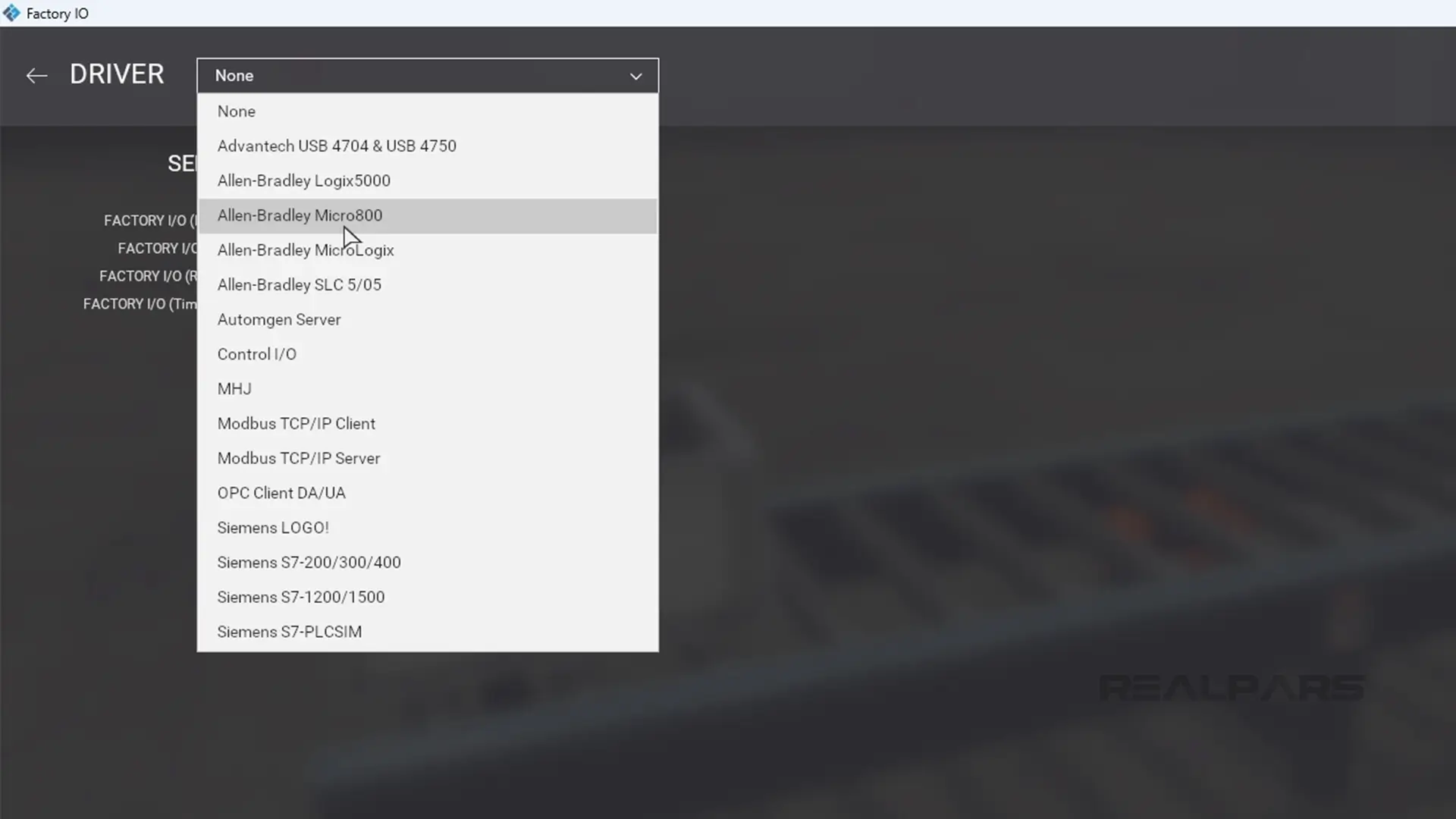
Once I select the driver, it is visualized in the Drivers window.
In this window, I can see how the signals from the scene are mapped to variables in the PLC. For communication with the PLC to work, I have to declare these variables exactly as they appear here.
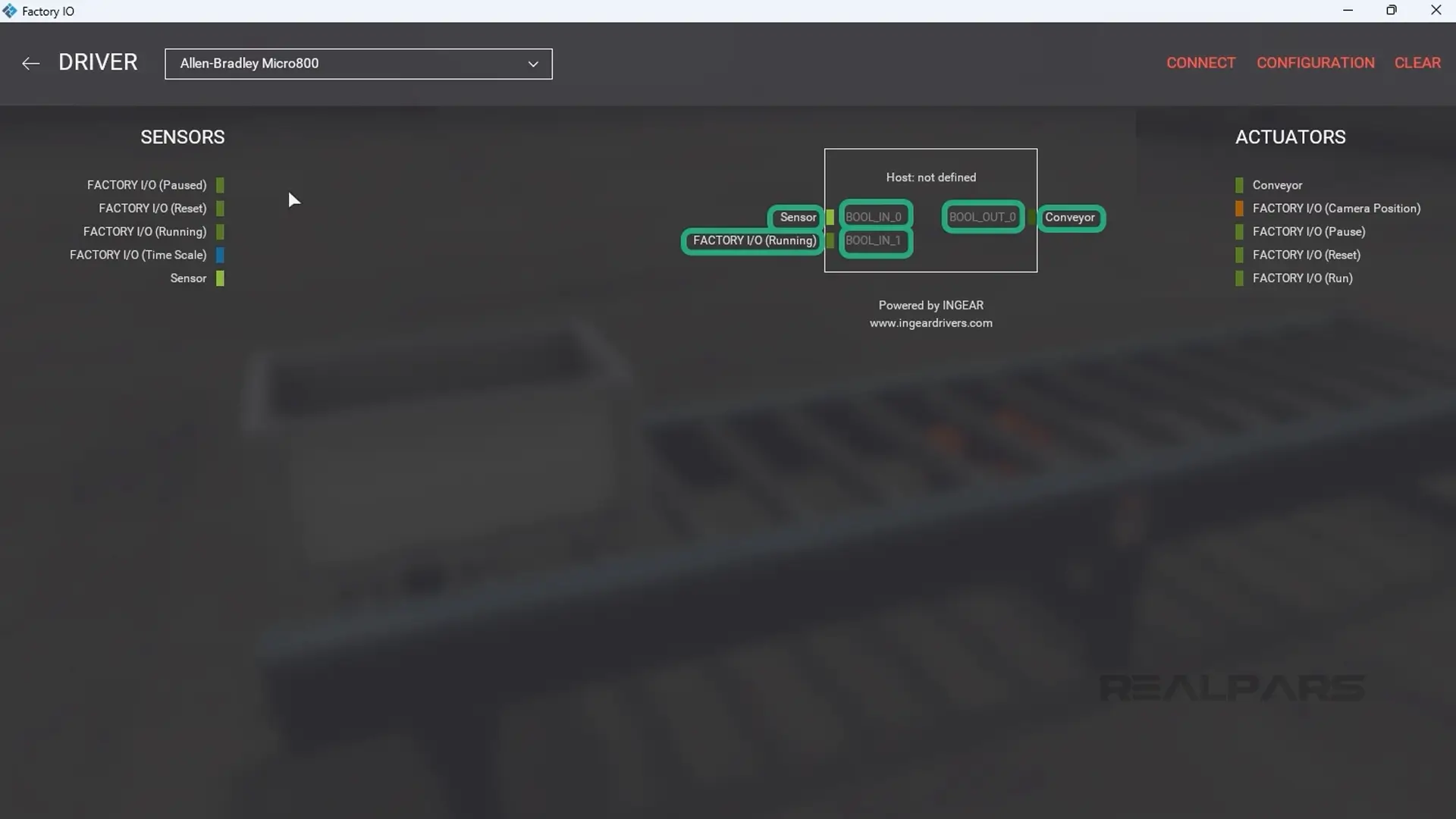
Let’s switch to Connected Components Workbench to declare the variables and download the project.
Set up Connected Components Workbench
In Connected Components Workbench, I create a new project called FactoryIO and add a Micro800 Simulator PLC to the project.
In the Global Variables table, I declare the variables that I will use in the project exactly as they appear in Factory IO.
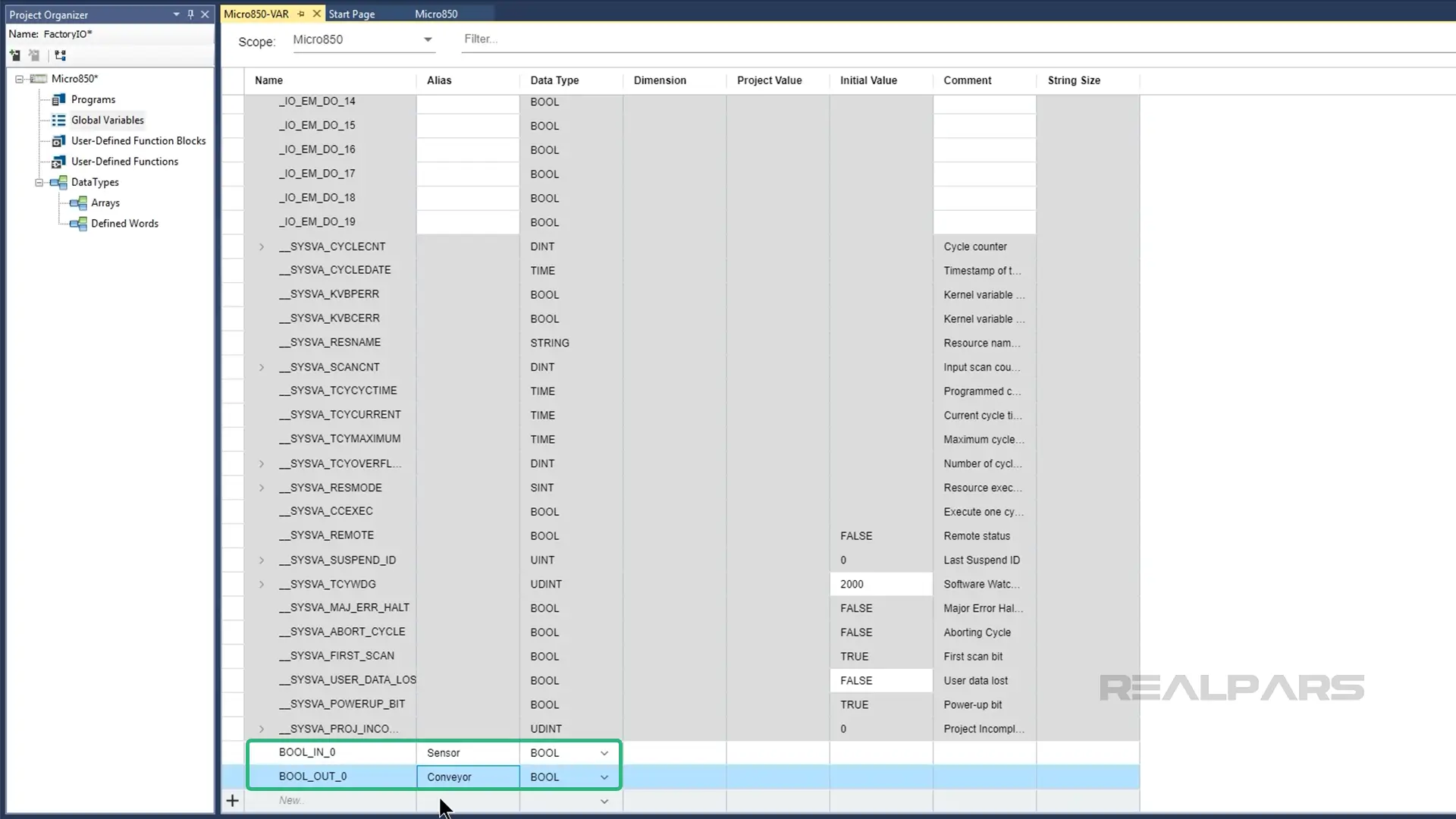
Then, I create a new Program and write the logic for the project. In this example, the conveyor will run when the sensor is not covered.
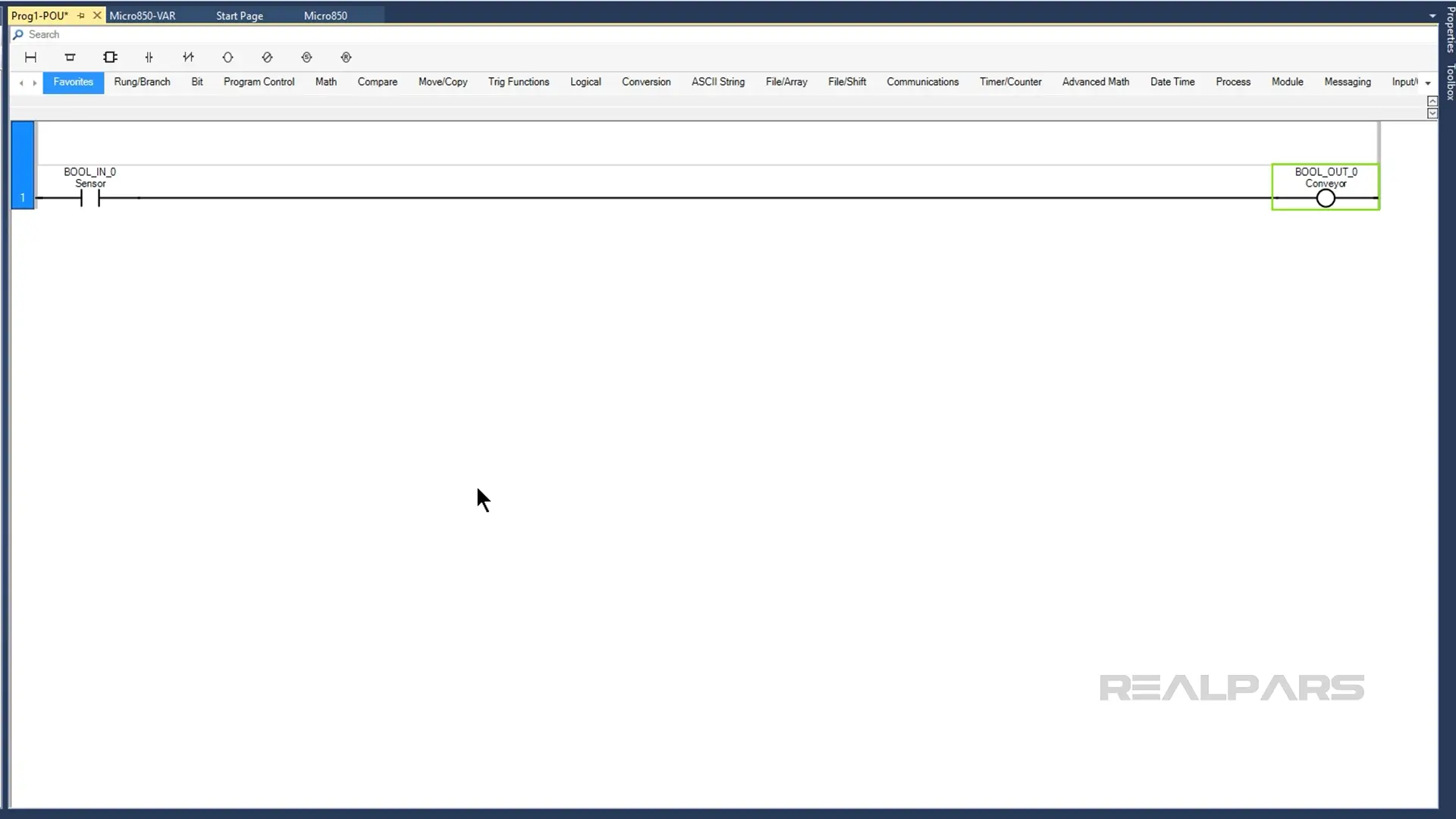
Now that our simple project is set up, I can download it to the Micro800 Simulator.
Set up the simulator
In Connected Components Workbench, I launch the Micro800 Simulator by clicking on the Start Micro800 Simulator button on the toolbar.
In the Micro800 Simulator window, I power up the PLC by clicking on the power button.
Once the PLC is powered up, I download the project to the PLC and put the PLC in run mode, as shown here.
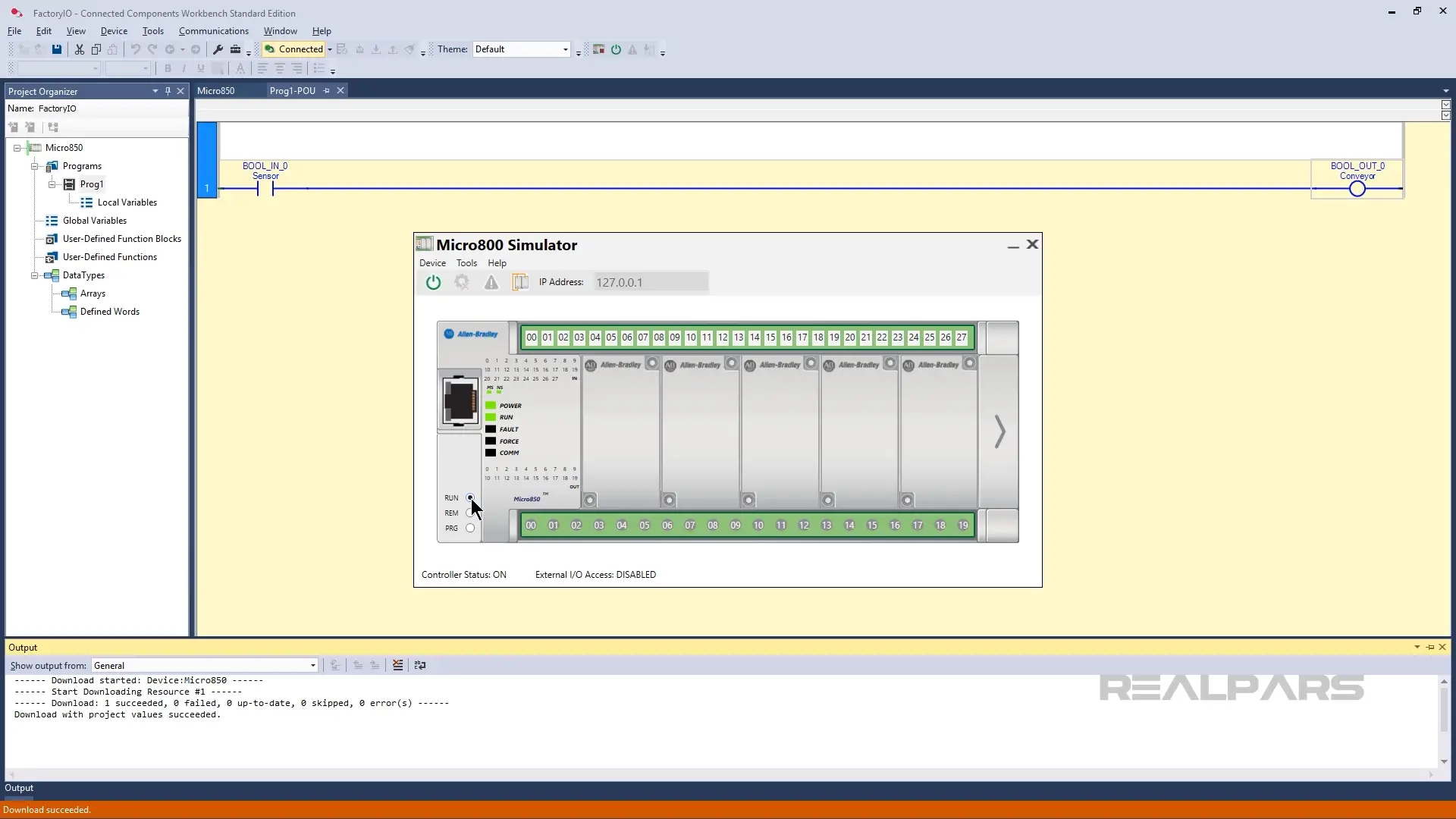
Let’s switch back to Factory IO to finish connecting the scene to the PLC simulator. Before I do that, I take careful note of the IP address of the Micro800 Simulator - I’ll need that in the next step.
Finish configuring Factory IO
In Factory IO, I click on Configuration in the Drivers window.
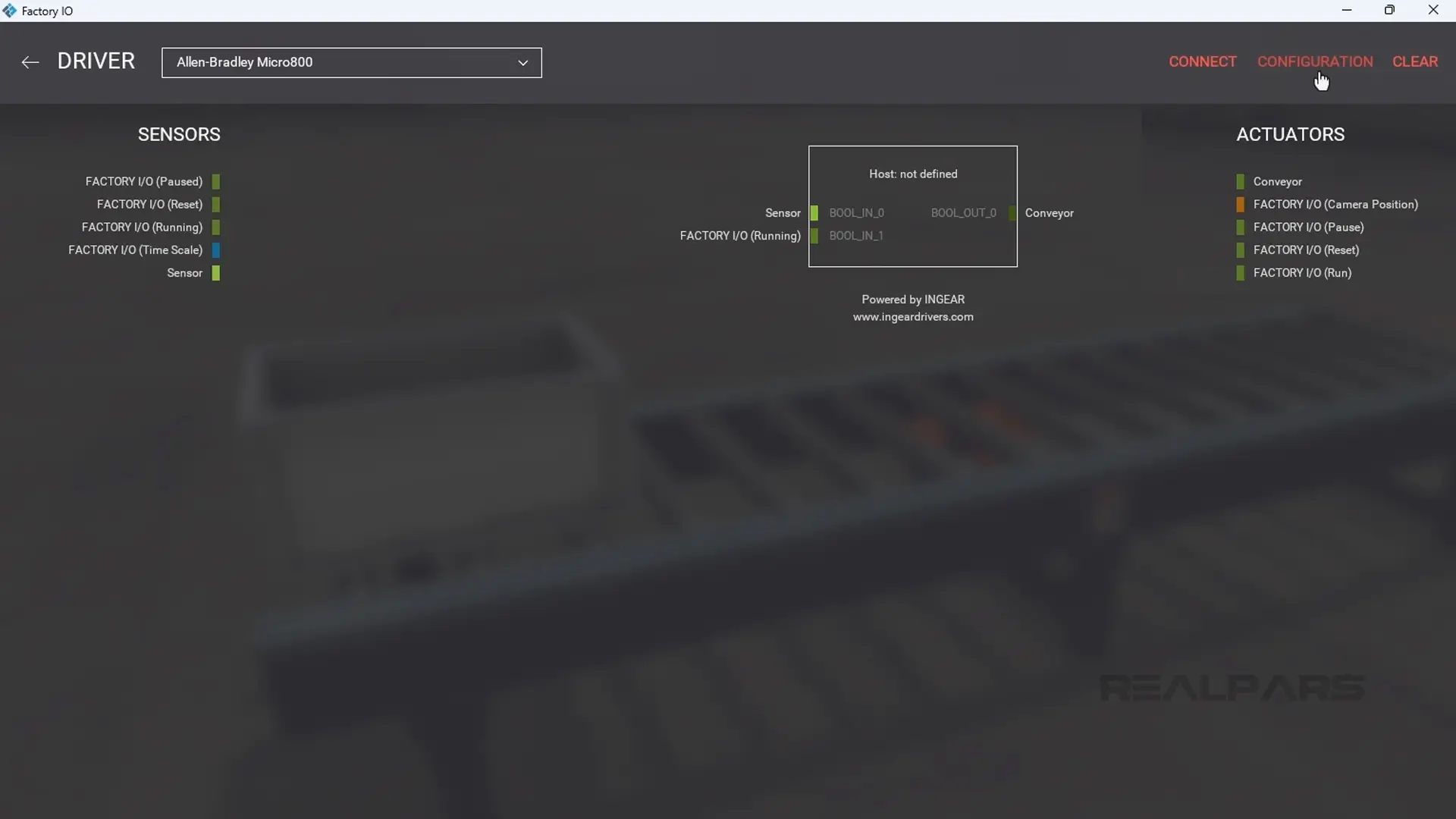
I enter the IP address of the Micro800 Simulator in the Host field to tell Factory IO how to communicate with the Micro800 Simulator.
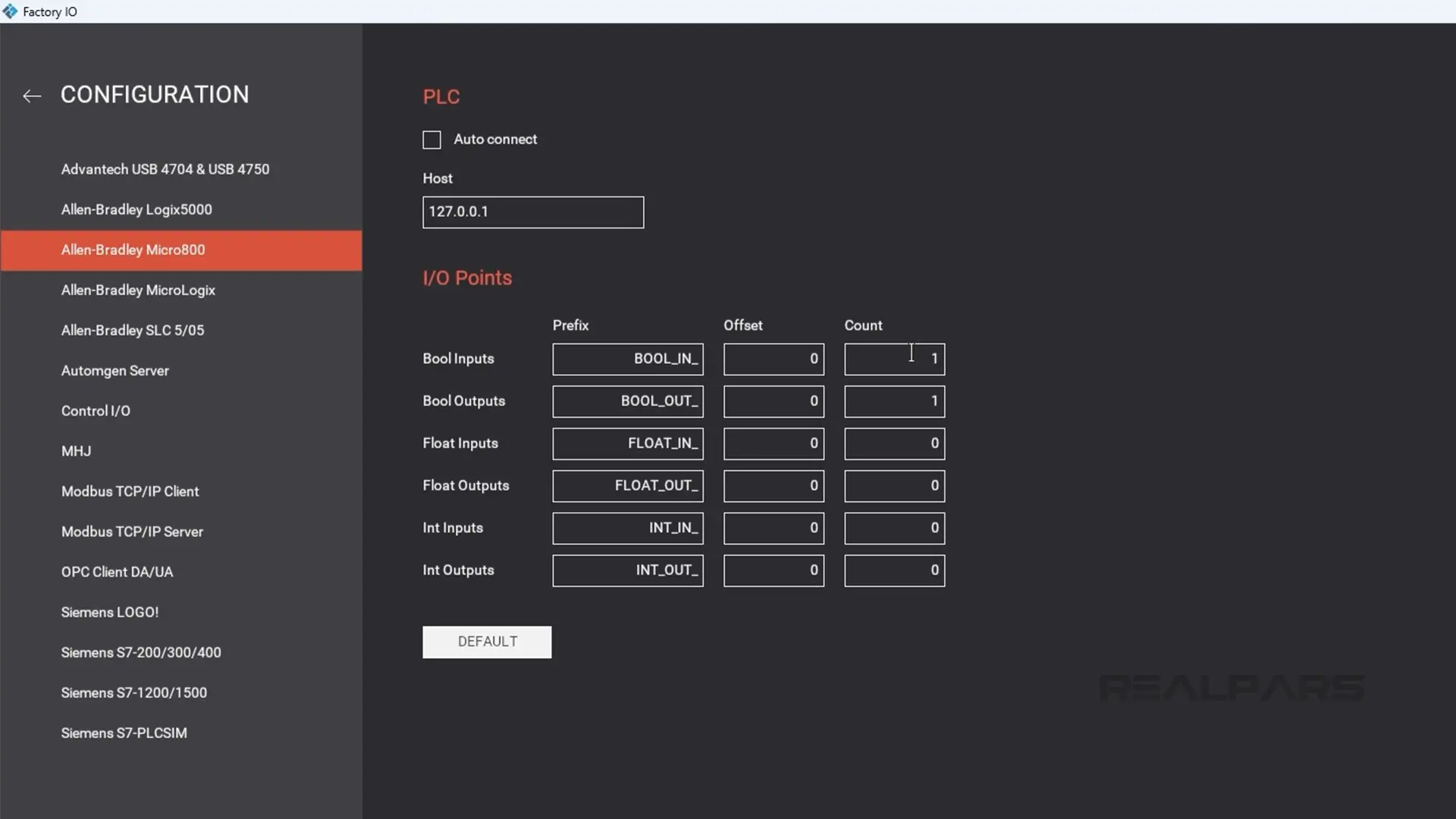
Once I have entered the IP address, I use the arrow to go back to the Drivers window and click Connect.
A green tick beside the driver confirms that the scene is connected to the PLC.

Now, I can close the driver window and run the scene using the play button, as shown here.
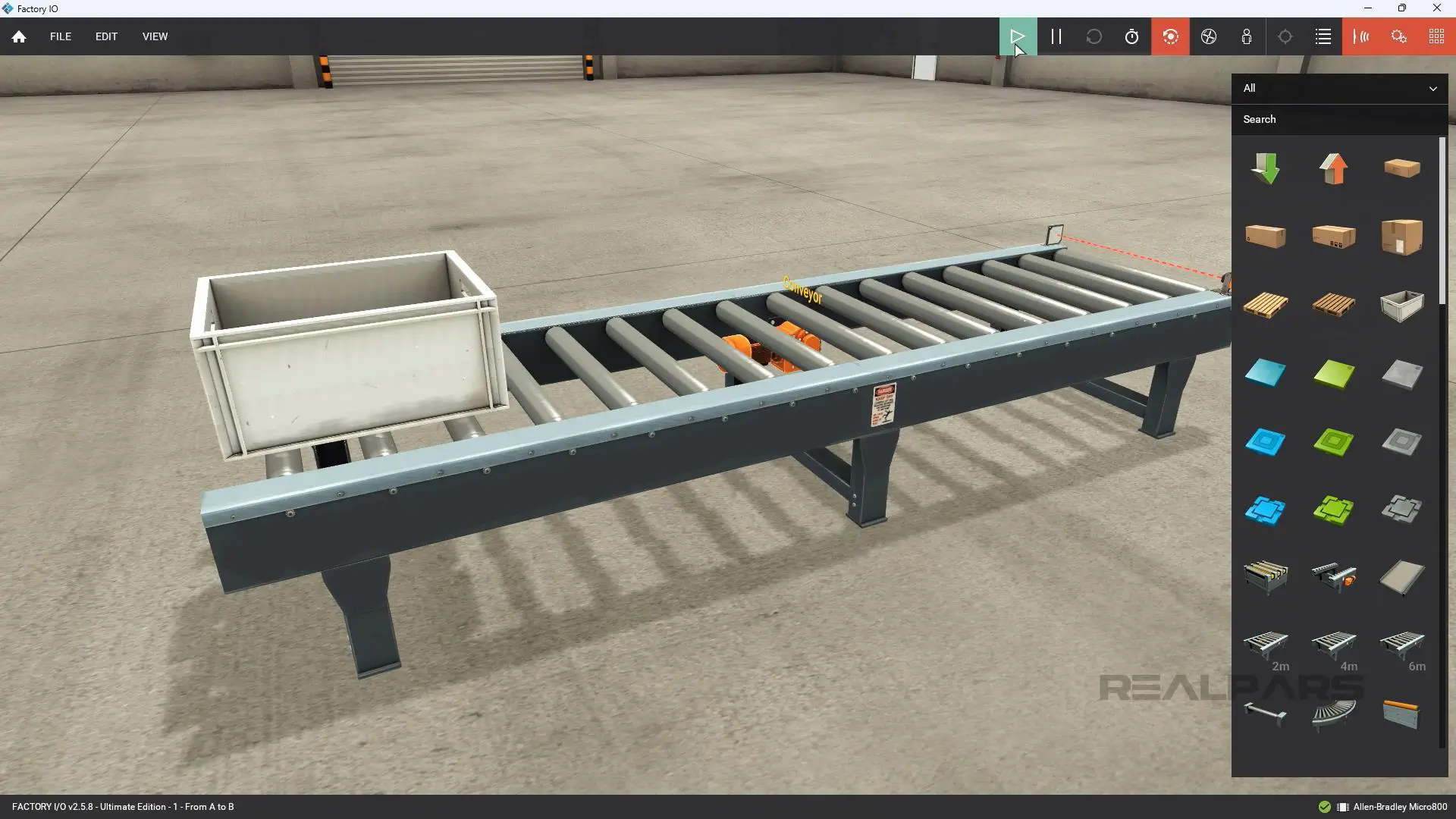
I can see that my logic is working correctly because the conveyor runs until the sensor is triggered.
Wrap-Up
In this article, I showed you how to connect the Micro800 Simulator to Factory IO. These two tools are available for free or with a free trial and can help take your learning to the next level by letting you build and test projects without hardware.
If you want to learn more about programming Micro800 PLCs with Connected Components Workbench or simulating processes with Factory IO, check out our PLC Programming from Scratch series of courses.
These courses teach you PLC programming from first principles in an easy-to-understand way. It is an ideal series for beginner PLC programmers who want to grow in their role as an automation professional.
You can find more information about these courses using this link.
We also offer several courses on PLC programming. If you want to improve your skills, check out realpars.com/courses. Under Skill Paths, filter for PLC programming.
One final note: this article is sponsored by RealPars Business. Want to train your engineers and technicians while reducing downtime? Head over to realpars.com/business.

